The Troubles
Now that Ireland was split up into the Irish Free State and Northern Ireland, it seemed like the problem was solved. Unfortunately, the troubles only just started, especially in the north. In Northern Ireland, the people who wanted to remain part of the United Kingdom (Protestants) were constantly fearing that the British government might support a united Ireland in the future. Also, there were still half a million Catholics living in Northern Ireland whom they did not trust. These Catholics still felt Irish and were furious that they did not belong to the rest of Ireland anymore. In this chapter you will learn about this 30-year conflict.
How the troubles started
After the separation, the protestant parties gained more and more power. They came up with a system that would make them the biggest party, including the areas in which there were mostly Catholics. Things started to become very hard for the Catholic people in Northern Ireland. The police force, for example, was 90% protestant and had the right to arrest people without a warrant. It meant that they could arrest Catholics just because they were Catholic. Also, many Catholics were unemployed and didn’t have a house. Only people who paid rent could vote during that time. So, the Protestants wouldn’t give Catholics a house because they were afraid these votes would make them less powerful.
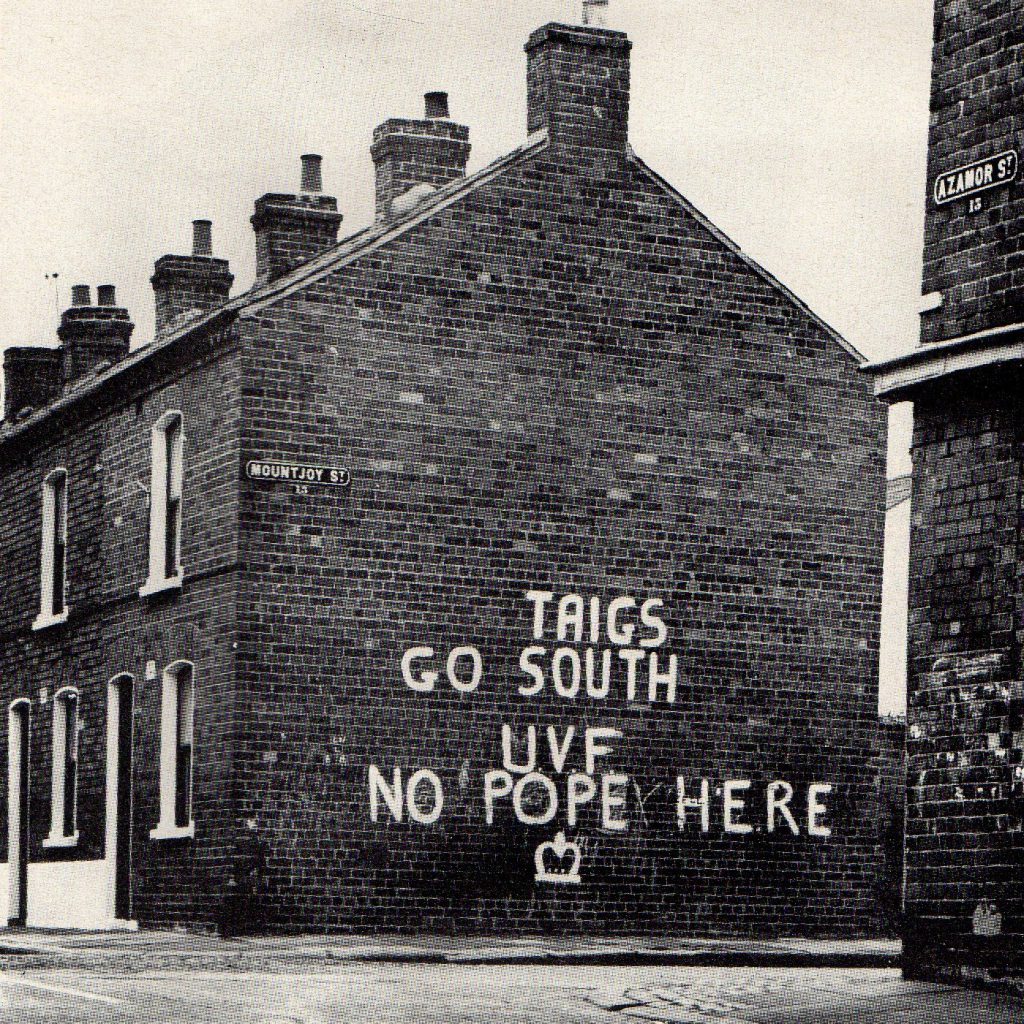
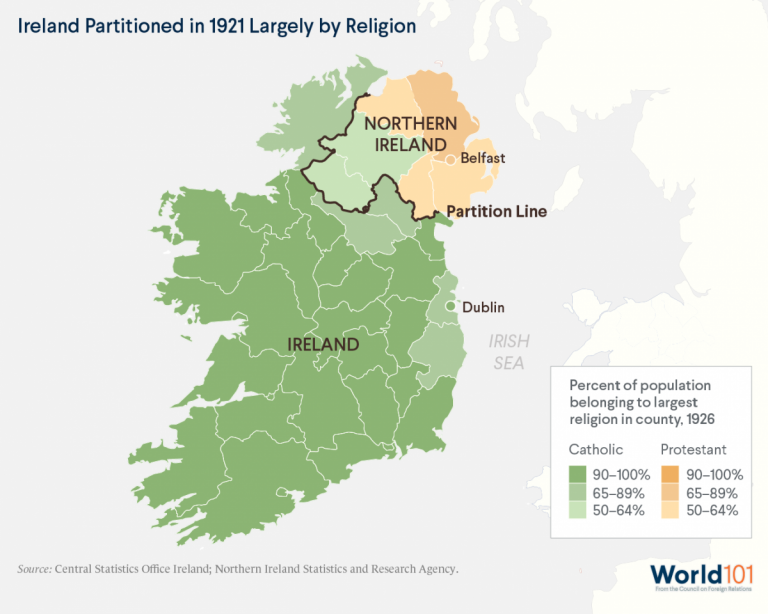
At a certain point, some Catholics went to London to complain about the Protestant parliament. But it didn’t matter; the English just said not to bother them and solve their own problems. A few years later, there were some attempts from the British government to make the situation fairer to the Catholics. They introduced the Welfare State in NI, which meant that Catholic children in the 1950s were allowed to go to higher education for the first time. This situation started their ideas about creating a new generation that would no longer tolerate what was going on. Despite all that, nothing really changed until the 1960s.
The Civil Rights Movement
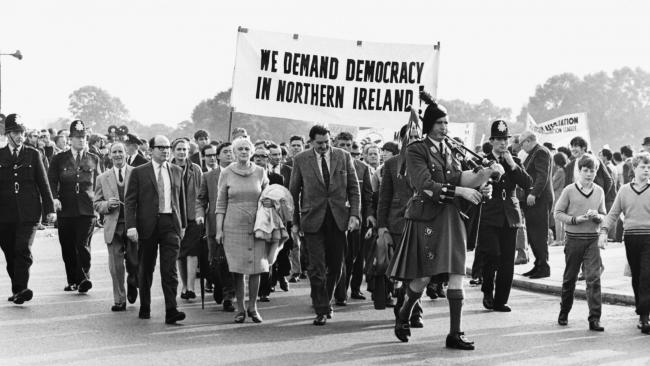
In 1966, during the celebrations of the 50th anniversary of the Easter rising (1916), the first killings happened. Some extreme Protestants killed three victims. One of them was actually a Protestant widow; the others were just normal Catholic citizens with no proven connections to the IRA. These killings reminded Ireland that there was still lots of aggression and hatred towards each other despite all the talking about peace between the two religions.
During the 1960s, more educated voices stood up against the power of the Protestant parliament and its rules. The Northern Ireland Civil Rights Association (NICRA) was born, and they had a long list of demands. They, for example, wanted to give every man a vote, a point system for getting a house and anti-religious-discrimination laws. But nothing really changed since there were still a lot of Protestants in the NI parliament. Therefore the movement started to organise marches and involve the media to make people worldwide aware of the problem.
One of the most well-known marches happened on the 5th of October in 1968. This protest march in Londonderry (or Derry, as the Catholics liked to call their city) was set up to provoke the authorities. This plan had worked because the minister for Home Affairs had forbidden it. This attracted even more members of the movement to attend the march. It caused a serious reaction from the police involving water cannons and batons used on the ‘peaceful group’ of marchers. This was all captured on camera, and it has been shown on television many times. It caused an explosion of anger within the Catholic community resulting in many marches, protests and demonstrations throughout Northern Ireland in the weeks that followed.
In August 1969, Londonderry was in trouble again. This fight, which went on for days, is called the Battle of Bogside. When the RUC finally got through the barricades, the Protestant mobs entered as well, smashing every window of every Catholic house they could find. The battles lasted and lasted, which eventually exhausted the police force causing them to loose part of Londonderry control.
Bloody Sunday
On January 30th 1972, over 30.000 people joined together to march in Londonderry (Derry). When a small group ignored the barricades in the Bogside area, the RUC, which were supported by British soldiers, opened fire. In this rain of bullets many were injured and 14 got killed by them in the end. Witnesses of the shooting argued that these civilians were unarmed, but the British army said that they shot them because they were carrying guns and bombs. Later, the Widgery Report, confirmed that the army’s story was right. In 1998 the investigation got re-opened. This time the report said that the ‘Bloody Sunday deaths’ were to blame to the British army. The shooting was unjust.
The Irish pop group ‘U2’ wrote a famous song about this day. Click on the video to listen to the song, read the lyrics and see pictures from that day. WARNING: Some photo’s can be experienced as shocking.
The Good Friday agreement
The fighting went on throughout the years and eventually killed over 3600 people, and more than 30.000 people were wounded. In the 1990s, the IRA announced a ceasefire, which meant they would stop the shootings and bombings. The political parties in NI and the Irish and British governments finally saw an opportunity to reach a peaceful solution. In 1998, after two years of negotiations, the people of NI and Ireland voted in favour of the ‘Good Friday agreement’. It was signed on Good Friday (the 10th of April) that same year. The political parties in NI now had to work together in a group called the Northern Ireland Assembly. Another important part of this agreement was that Northern Ireland citizens could decide whether they wanted to have the Irish or British nationality or both.
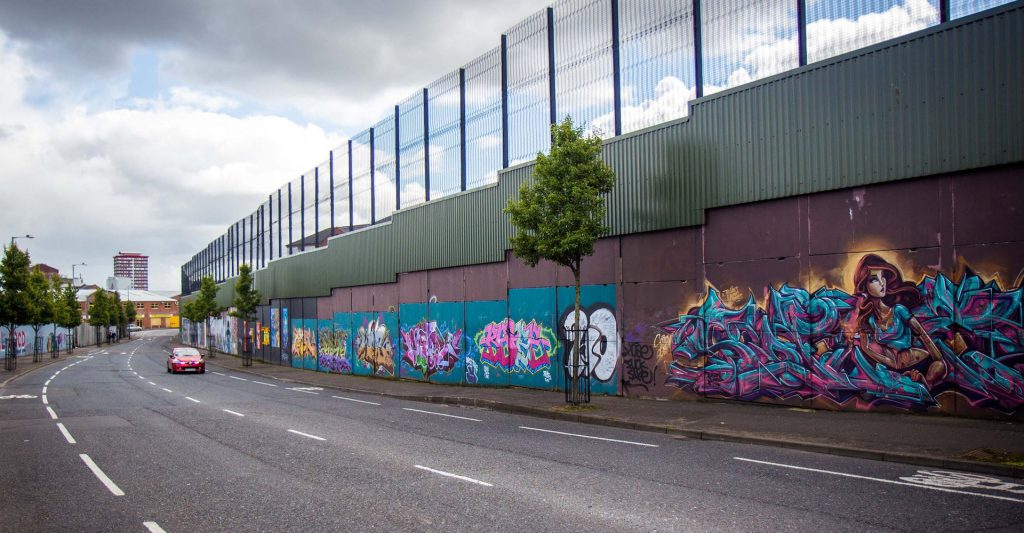

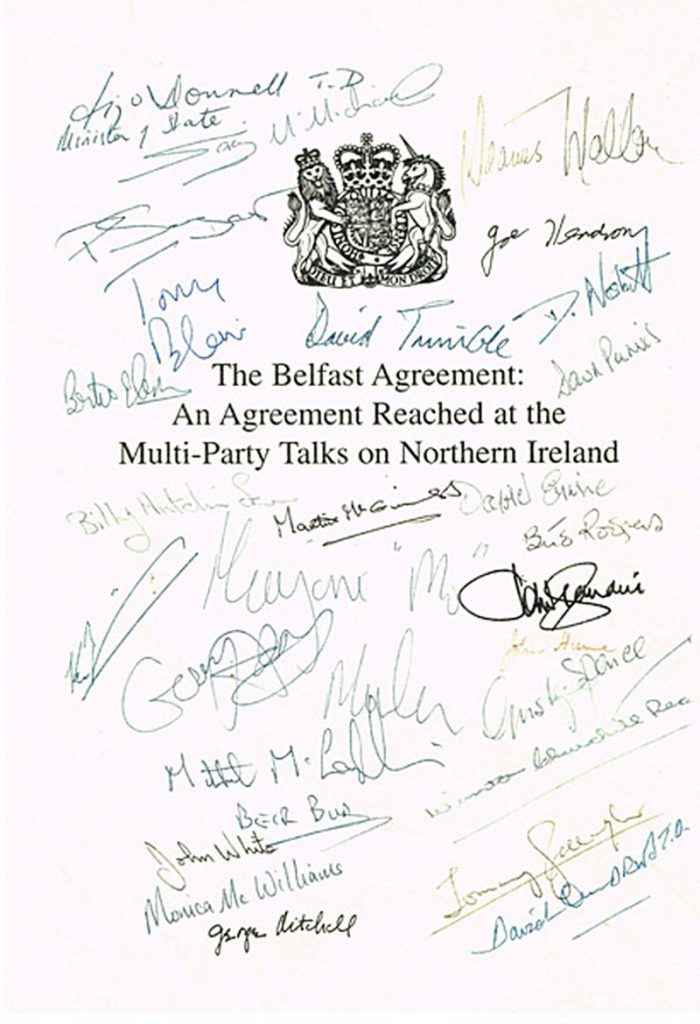
Northern Ireland today
Nowadays, peace is still in place between the two major religious groups in Northern Ireland. Unfortunately, the two ‘tribes’ keep on living in separate communities in the bigger cities. One of the reasons for this separation is that Catholic and Protestant children are mainly taught at separate schools. The second explanation is the peace walls, of which there are still 109 in Northern Ireland. They still separate the two communities, mainly in Belfast and (London)Derry. These peace walls are there because they give the people of both sides a feeling of safety. They feel like they ‘own’ the area and therefore don’t feel the need to talk to one another.